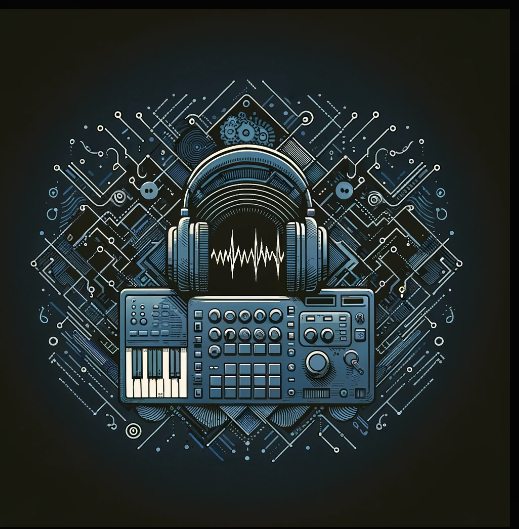Microsampling can make a big diffence if you are looking to improve your beat making. But, what is microsampling in music? It's the process of using tiny snippets of sound—fractions of a second long—to create new, compelling beats and textures. It has changed how producers approach sound design and in this post we will show you the why and the how.
In This Article, You Will Learn:
- The importance of beat tracking in synchronizing microsamples with your track’s tempo.
- How to use beat detection software to accurately map samples to your track's rhythm.
- Techniques for aligning microsamples to the beat grid, including time stretching and quantization.
- Creative applications of beat tracking for adding depth and complexity to your beats through layering and phasing.
- Advanced tips for using beat tracking to explore polyrhythms and syncopation, enhancing the track’s rhythmic interest.
The Essentials of Microsampling Music
Microsampling allows producers to extract and manipulate the most minute sound particles from recorded material. It's used often in electronic music, giving birth to beats that are rich, textured, and entirely unique.
Why Microsampling?
The adoption of microsampling in beat making isn't just a trend; it's a response to the demand for fresh and innovative sounds. It pushes boundaries, allowing you to explore new creative boundaries. The result? Tracks that are not only complex and layered but also resonant with listeners seeking new auditory experiences.
Tools and Technologies for Microsampling
Effective microsampling requires the right set of tools. From sophisticated DAWs (Digital Audio Workstations) to specialized plugins for beat tracking and detection, the choice of technology can greatly influence the outcome.
Tools like Ableton Live, with its warp feature, and plugins that specialize in beat detection, are indispensable for modern producers.
Effective Microsampling Techniques
1. Selecting Samples: Aim for unique sounds, even from everyday noises. Use a DAW to isolate clips, aiming for 0.1 to 0.5 seconds for a true microsample feel.
2. Manipulating Samples: Utilize DAW features for precision editing. Apply pitch shifting (+/- 12 semitones for variety), time-stretch (75-125% original length), and compression (ratio 4:1, threshold -18 dB) to enhance texture.
3. Seamless Integration: Align microsamples with your track's BPM, using quantization settings (1/16th or 1/32nd note) for tight synchronization. Layer samples in key, adjusting pitch to match the track's scale.
Beat Tracking for Microsampling
Incorporate beat tracking tools to map samples to your track's rhythm. Set beat detection parameters to match the BPM closely, ensuring microsamples sync perfectly with your beat structure.
Microsampling Tips for Producers
Understanding how to manipulate beat tracking tools is essential for ensuring that every microsample contributes effectively to the overall groove.
Focus on precision and creativity.
Experiment with unconventional sounds, recording at high quality (24-bit/96kHz) for the best manipulation flexibility.
Transform ordinary into extraordinary by focusing on the details that make your track stand out.
Beat Tracking and Synchronization in Microsampling
Here are key concepts and tools to consider when it comes to beat tracking and synchronization in microsampling.
- Beat Detection Software: Utilize software like Ableton Live, FL Studio, or Logic Pro, which offers built-in beat detection features. These tools analyze audio files to identify tempo and beat patterns, providing a foundation for synchronizing samples.
- Setting Parameters: For effective beat tracking, adjust parameters to match your track's BPM (Beats Per Minute). In your DAW, you can manually input the BPM or use tap tempo features to find the right pace. Ensure that the software's grid aligns with the detected beats for precise editing.
- Microsample Alignment: Once the BPM is set, align microsamples to the beat grid. This might involve snapping samples to nearest beat divisions such as quarter notes, eighth notes, or sixteenth notes, depending on the desired rhythmic complexity. For microsamples, finer divisions (e.g., thirty-second or sixty-fourth notes) may be more appropriate.
Advanced Techniques
- Time Stretching and Compression: To further ensure coherence, use time-stretching for samples that don't quite fit the grid. Compressing or expanding the sample without altering its pitch can make it rhythmically consistent with your track.
- Quantization: Apply quantization to tighten timing. This feature nudges microsamples to the nearest specified beat division, cleaning up any timing discrepancies.
- Layering and Phasing: For added texture, layer microsamples at different rhythmic intervals or apply phasing effects for a more dynamic sound. Experiment with offsetting samples slightly for a richer, more complex beat.
Creative Examples of Microsampling in Electronic Songs
Consider Aphex Twin or Burial, artists that leverage microsamples in their tracks and define their signature sound.
Recap
- Microsampling is a technique in beat making, utilizing tiny sound snippets to create new beats and textures.
- Effective microsampling involves selecting unique samples, manipulating them through pitch shifting, time-stretching, and applying dynamic processing.
- Beat tracking and detection are essential for aligning microsamples with the track's rhythm, ensuring cohesive sound.
- Creative examples and case studies illustrate the transformative power of microsampling in electronic music production.
- Tips for producers emphasize experimentation with unconventional sounds and the importance of precision in sample manipulation.
Final Words
Microsampling isn't just a technique; it's a shift in music production. By transforming brief sound fragments into the backbone of tracks, it opens up limitless possibilities for creativity and innovation. This approach not only breathes life into the mundane but also helps producers create a signature sound. Microsampling means pushing the boundaries of what's possible in electronic music, ensuring your work doesn't just sound good—it stands out.






Comments